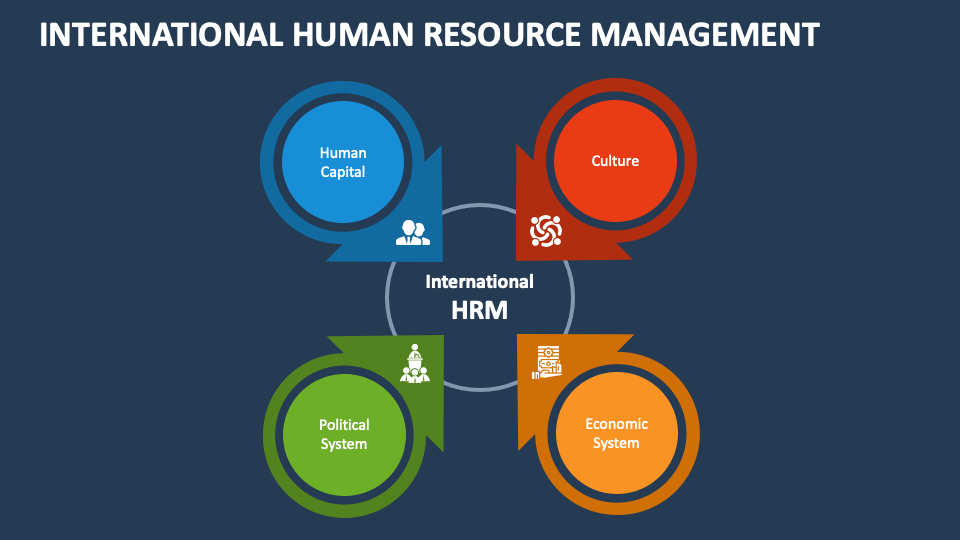KOL605HRM International Human Resource Management Assignment Sample
Introduction
In this report, the concept of human resume management is going to be established with proper concepts and theories. This study is going to be discussed the cultural practices that have been incorporated within the workplace and this concept is going to be critically analysed along with the organisation performance.
The impact of diversity on the employees and organisation performance is going to be illustrated by aligning this concept with the proper theories and concepts. Factors of diversity that influence employee satisfaction and performance will discuss through this study that helps to understand the relationship between HRM and cultural management.
International human resource management strategy is going to be addressed along with the human resource strategy and policies practice in different countries. Theories and concepts are going to be e discussed that helps to understand the diversity and the employee management process as well as the increment of the organisation performance.
Critical Analysis of the Cultural Practice within the Organisation
An organization’s culture defines the accurate way to behave or act within the organization. The organizational culture consists of values, expectations, and practices that lead and inform and also improve the performances of all team members.
Organizational culture affects the way people and groups interlude each other with clients, and with the stakeholder. A strong culture is a general denominator among the most successful organizations.
The organizational culture is a collection of beliefs and values established by leaders and communicated through several methods. Ultimately shaping employee perception, behavior, knowledge and understanding.
Cultural Practices
Evaluate Culture
“Culture” is first evaluated while practicing culture in an organization. At first the organization finds some values from their employees, like values that are important, know the values that all the employees are being expressed in the current culture, and values that all the employees believed and that take the organization to a higher level.
According to Kangaset al. (2017), this information helps the organization to know or understand about the personal motivations of the employees, their experiences with the organization. The organization uses these data to evaluate the culture and to develop their business.
Participated in the Cultural Dialogue
The organization collected and analyzed all the information from the culture survey and participated in cultural dialogue about their findings. According to Ramani et al. (2018), a great dialogue begins with a simple -to understand presentation of the survey findings.
The good news is shared and as well as the bad news is shared. Then simplify a discussion to identify two or three cultural elements that might bring about cultural transformation.
Behaviour Promises
Through the dialogue the organization identifies the right culture elements to focus on. The organization then tries to identify the desired behaviors that all the employees can easily understand and idealize.
According to Gelfand et al. (2017), the organization decided that the culture should focus more on accountability. Then choose the following behaviors.
Holed to everyone accountable for behavior and results.
Feedback is given freely and also in a constructive way Every employee is asked to admit their mistakes and correct them.
Culture Measure Dashboard
A culture measure dashboard is much like any other scorecard. Then the organization sets a goal to keep it simple and choose metrics that all the employees believe that they can impact.
Then the metrics include minimum and expanded targets, and it is not to be easy or difficult to reach.
While it’s developed, all teams have access to the culture measure dashboard and also include the best metric for their team. A metric for caring might focus on customer satisfaction scores. In the organization the key is aligned culture, values, behaviors and metrics so that everyone can understand their impacts on the culture.
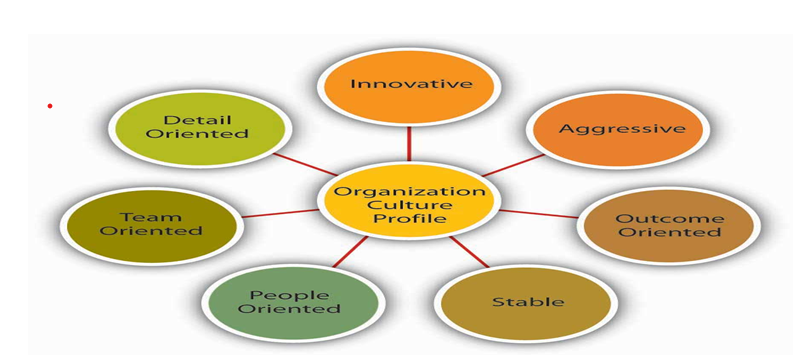
Figure1: Organizational Cultural Practice
(Source: Kangas et al. 2017)
Update HR Practices
To ensure buy-in across the organization, the most important things are to integrate the behavior promises and metrics into the performance review process, and also hire promotion practices.
Then the organization hire a well-qualified employee or a player who shares the cultural values. The organization only looked at the dismal track record. The organization always tried to reward and recognize people to develop their organization.
Communication
Communication is the most powerful and best way for any cultural transformation. For better communication all the employees are wanted to explain their increased focus on consciously managing organizational culture. Communication is a long-term commitment to an ongoing and deep dialogue that encourages and develops all levels of the organization.
Culture Regularity
The final and best practice to transform organizational culture is committing to re assessing the culture every 1-2 years. If all employees follow the first six best practices, they find their culture is moving in the right direction.
Practicing organizational culture is very helpful for all the people and employees. Thus, the culture is practiced in the UK.
Impact of Diverse Culture in the Workplace Performance
Cultural diversity represents a diverse cultural and ethnic class of society. Cultural diversity in the workplace can be in different ways like the employee from different origins, different political opinions, different races, and different sexual attitudes. According to Cui et al. (2018),
the term cultural diversity refers to representatives from diverse backgrounds coming together and working as a team, which promotes an environment of inclusion.
Benefits of cultural diversity in the workplace
The advantages of diversity are broad and different. Gomez and Bernet, (2019), mentioned that cultural diversity in the workplace is an important first step for companies looking to compete internationally.
There are 7 key benefits of cultural diversity in the workplace.
- Cultural diversity helps to develop and increase skillets.
- Various cultural perspectives can inspire creativity and stimulate innovation.
- Local market information and knowledge make businesses more competitive and profitable.
- Attracting culturally diverse talent enables an organization to attract and retain top talent.
- A diverse skill base enables an organization to offer a broader and more adaptable range of products and services.
- Diverse teams are extra productive and operate better.
- Greater probability for personal and expert growth.
Challenges of cultural diversity in the workplace
Creating a culturally diverse workplace is not necessarily straightforward. Although different companies will encounter difficulties in this process, there are some common issues that need attention.
- Professional communication can be difficult to misinterpret or understand based on language and culture.
- Working style conflicts between teams.
- Different interpretations of professional etiquette.
- Navigating the costs of responding to visa requirements, employment laws, and the needs of the workplace can be challenging.
- Centering into multicultural groups can be hard in the face of negative cultural biases or stereotypes.
- Teammates from some cultures may be less inclined to listen to their voices.
Cultural diversity and its impact on employee satisfaction
According to Kawiana et al. (2018), employee job satisfaction and cultural range in the region of the job are quite extraordinarily important. The human resources department observes that employee engagement leads to job satisfaction.
Engaged employees are people who care about their jobs, their products, their employers, their managers, and their colleagues. Diverse culture and ethnicity are taken into account in employees’ opinions about their jobs, employers, and empowerment, such as participation in decisions and implementation of changes at work. HRM practices in UK culture emphasize empowerment and employee engagement.
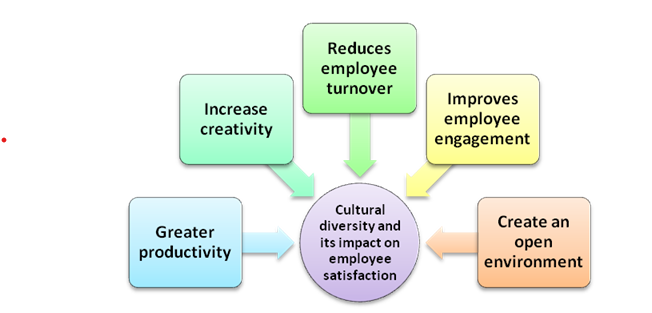
Figure2: Cultural diversity and its impact on employee satisfaction
(Source: Created by the learner)
-
Greater productivity
The presence of cultural diversity in an organization helps to grow the level of overall productivity. It can help the company to know about the specific role that is appropriate for the employee, and the employee may find it valuable.
-
Increase creativity
When different cultural people exist in the same organization, they can expect better and different ideas. This increases the overall level of creativity that exists in the organization.
-
Reduces employee turnover
If a company values cultural diversity, more potential candidates will apply for vacancies. This provides the company to make the best decision in terms of employee growth.
-
Improves employee engagement
The best way to organize employee participation is to understand their background, skills, and life experience. This will encourage employees to work harder and be more loyal to the organization.
-
Create an open environment
Cultural diversity brings humanity, perspective, and meaning to the daily employee experience. It creates an environment that allows and encourages people to do their own thing.
Factors that Influence Organisational Culture and Performance
Organisation culture creates a sustainable business structure and a diverse and strong culture can enhance the performance of both the individual and group. A positive cultural practice within the organisation can be helpful to integrate the aspects of employees and a chaos free environment influence them to work accordingly.
A positive culture and diversity of the culture gives a positive impact on the organisation by creating moral values in the thoughts of employees. Diversity within culture has induced multiple points that affect the various aspects of the work process in the organisation.
There are many factors through which diversity induces greater effectiveness in the adaptability, innovation, decision making and creativity that enhances the performance of the organisation. According to Roscoe et al. (2019) adaptability, nature of the business, values, human resource management, employee satisfaction, consistency and adaptability of the employees are some factors that it involves within the enhancement of the organisation culture.
The human resource management observes all the cultural aspects to improve their corporate cultural strategy for a particular organisation. Developing values and policies within the work culture gives a positive impact on the effectiveness of performance. Organisation culture or organizational climate has been influenced by adaptability, a mission test by the organisation to build a better organisation culture, consistency with their values and moral ethics, involvement of the employees within the culture and employee satisfaction.
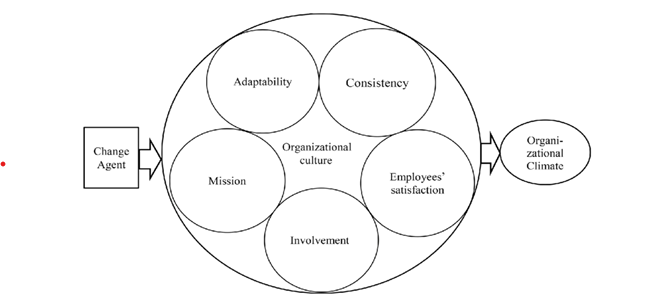
Figure 3: Factors Influence Organizational Culture
(Source: Carvalho et al. 2019)
Factors induce the organisation culture as well as its environment that influence the cultural aspects.
- One of the factors that affected the diverse culture and influenced organisational performance is leadership principles. It provides dignity and values to the employees and makes a greater culture within the organisation (Carvalho et al. 2019).http://KOL605HRM International Human Resource Management Assignment Sample
- Creating value and policies within the organisation or cultural aspect is very much important to induce a strong bond with the diversity in the corporate business structure.
- Diversity is associated with employee satisfaction which is very much important within an organizational culture as the successful development of organizational culture influences the satisfaction of the employee.According to Nazarian et al. (2017) when an organisation serves an effective culture within the corporate structure employees can easily get attached to it and that enhances the satisfaction as well as the performance of the employees.
- Within an organisation, HRM has the responsibility to conduct the involvement process through which employees can get connected with the corporate strategy and can develop moral values within themselves.HRM plays an important role in employee satisfaction and builds an effective cultural strategy.
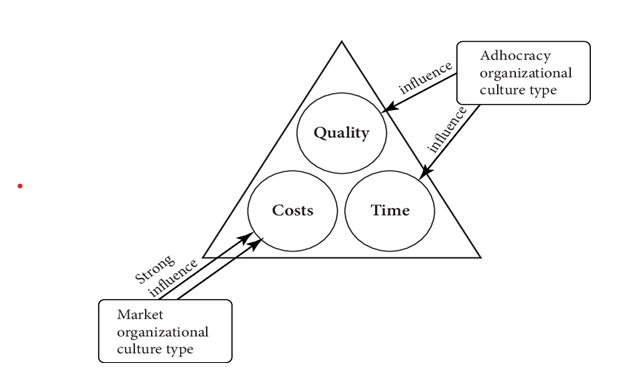
Figure 4: Model of Organization Culture
(Source: Erthal and Marques, 2018)
The internal culture of an organisation also depends on the recruitment and selection process of the employment and the more effective and successful the process the more the employee gets satisfaction throughout the work process. Both the internal and external culture of the organisation can be maintained if the stakeholders and clients are more connected with the employees and that also helps to develop the satisfaction of the employee.
The model of organisational culture also provides a pictorial triangle structure where it can be easily understood that the external organisation culture and internal organisational culture are dependent upon each other. The external cultural aspects influence the quality, time and cost of the products and the services that the organisation provides and regarding this the internal organisational culture is also affected or influenced.
Erthal and Marques (2018) have stated that many factors affect the cultural aspect within an organisation and HRM effectively manages all the elements of the factors and that enhances the performance within the organisation. All these models and concepts of the HRM and the diverse culture within the organisation provides the idea that organisational performance also depends on how satisfied the employees are within the organisational culture.
The successful practice of culture within the organisation can easily satisfy the employees need and that influences the performance.
Critically Analysis the HR Strategies of the Countries
HR Strategies
HR management deals with the various factors within the organisational culture and diversity. The HR strategy depends upon the organisational culture and that it differs according to the country’s business structure.
There are five major strategies that HRM is taking into consideration and discussed below by evaluating the different aspects of the different countries.
Legal Procedures: Legal procedures like recruitment selection and employee security are observed by the HR strategies within an organisation. HR must secure their employee’s safety and make them comfortable in the work field.
According to Brewster (2017), recruitment and selection is a legal process that HRM practices in its structure and an effective selection process creates a possibility to develop diverse work culture.
Employee Engagement: Employee engagement is another factor that affects cultural diversity within the workplace and HRM with help of incentives, rewards, the survey provides programs that engage the employee in the corporate work structure.
This practice of HRM is very much important as it creates sustainability within the workplace as it can easily satisfy the employee’s needs and requirements.
Career Advancement: Effective recruitment and selection are not enough to engage an employee within the organisation, a constant development program is needed to create satisfaction. HRM practices training and development processes within the work culture that helps to maintain diversity.
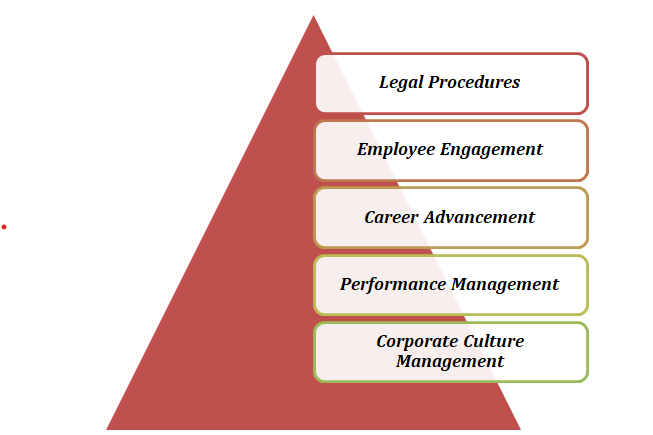
Figure 5: HRM Strategies
(Source: created by the learner)
Performance Management: To manage the organisation work culture the effectiveness of the performance is very much important and HRM within the organisation influence employees for better performance (Abraheem and Adams, 2017). http://KOL605HRM International Human Resource Management Assignment Sample
HRM links employees with several training processes through which they can easily evaluate the decision-making ability, adaptability within themselves.
Corporate Culture Management: HRM is engaged between the employees, clients and stakeholders and provides a better accommodation of the corporate work culture. As there are many organisations where diversity has practised as different genders, different religions are work together.
In this case, HRM balances all these factors and create a better understanding of the workplace culture.
Global Differences and Similarities in HR Practices
The HRM strategies differ from country to country as the cultural aspects influence the HRM practice. In the year 1990 different experienced people of different countries practice strategic human resource practices.
As the cultural aspects, religion and thoughts of people depend on the demography HR managers needs to take different strategies to balance all this.
- The selection process in the UK depends upon the personal ability and walking interview process. In the US the employees are judge based on their interviews, persona and their technical knowledge.According to Borghouts-van and Freese (2017) in Australia and Mexico for the selection process, a real connection is mandatory. In some countries like Japan, China, Korea and other Asian countries three ability tests are conducted for the selection process.
In many Asian countries along with the interviews, the written examination is also performed for a better recruitment process.
- In the UK and other European countries, appraisals are given due to the top priorities of the work performed.In the US, Australia and Mexico the reward and apprisal have been given to the employees by evaluating the top three qualities within them. Brewster and Söderström (2017) have stated that in Asian countries, the incentives are basically in terms of monitory incentives whereas in the US they provide paid vacation and luxury in terms of rewards.
- The training and development process is also differed by the different countries. More developed the country more investment towards the training process as they know that better training can build the employees at his best. In Japan, approximately 359 US dollars, in other Asian countries 241 US dollars and the US 742 US dollars are the expense of per-employee training and development program (Banihashemi et al. 2017).http://KOL605HRM International Human Resource Management Assignment Sample In the UK and another developed European country the amount us approximately 400 US dollars.
- The cultural diversity is different as in the US the corporate culture is more developed and no discrimination has been founded. Whereas in many developing countries there is a huge issue like discrimination and for this HR needs to take different strategies and policies.
International HR Strategy with International Business
The international business needs internationally developed HR strategies to cope up with the different situations. The international human resource management strategy refers to the issues, policies, practices and functions faced by the HRM internationally.
The strategic activities of the international human resource management provide goals and concerns about the international business.
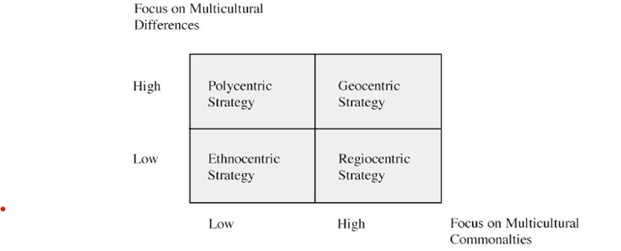
Figure 6: IHRM Strategies
(Source: Pucik et al. 2017)
There are some approaches that IHRM practices within the international business structure.
- Ethnocentric Approach
- Polycentric Approach
- Geocentric Approach
- Regiocentric Approach
The ethnocentric approach refers to the key elements that help to construct a policy-making process to the farm for perceiving international business strategy and through this approach the firm can justify corporate culture policies within the particular country.
Polycentric approaches refer to the recruiting policies in a host country and provide a strategic approach to control all subsidiaries’ policies from their own countries. According to Pucik et al. (2017), the geocentric approach provides the best facility to identify the best people for the jobs in the international market. This approach deals with the concept of human resources and the different cultural aspects.
By contacting this approach one can also associate with the diversity and cultural aspects as this approach connects between the human resource abilities and their management process. In the regiocentric approach, the overall geographic operations through the ethnocentric, polycentric and geocentric can be understood as this approach deals with all the other elements of the IHRM.
Though all these staffing approaches for HR in approaches have some disadvantages like limitation towards carrier mobility, immigration, laws and policies which restricts some of the approaches to host into a new country for the international business purpose.
IHRM Policies and Practices
There are some policies and practices that international human resource management practices into the international aspects of the business.
Employee engagement
Employee engagement is another practice of IHRM to create a better stable corporate structure within the international business. In the international business market for a new organisation, engagement of the employee can generate better sustainability. According to Torbiörn (2017) training and development programs, incentives, pay scales are included within the employee engagement.
To sustain within an international business market HRM needs to provide better employee engagement programs to sustain the different cultural diversity.
Recruitment and selection
International recruitment and selection is the main duty of the HRM strategy where recruitment and selection methods are provided within a new international market by advertisement in the newspaper, internet or social media. In the US and the UK, the applicants are more comfortable with newspaper advertisements and social media advertisements.
But it has been seen that it is University advertisement and compassing is the most effective way to recruit and select (Ererdi et al. 2020). http://KOL605HRM International Human Resource Management Assignment SampleWhereas in Asian countries like Japan, Taiwan for blue-collar job preference of friends and family has been considered.
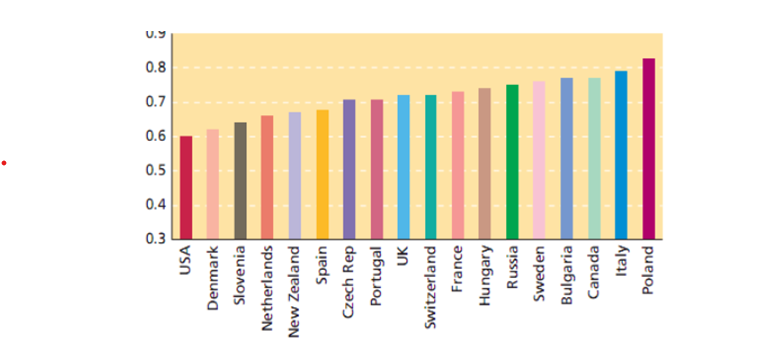
Figure 7: Hiring and Recruiting Facilities in Different Countries
(Source: Ererdi et al. 2020)
Performance management
For IHRM performance management is also effective to consider the better market structure. Performance management helps a business enter into the international; business market by understanding proper recruitments, strategies.
Training and development
The training and development process is different according to the country through the IHRM and it creates complexity within MNCs. for an international business, it is centralised for suppliers, employees and other stakeholders. According to Farndale et al. (2017), cross-cultural training is also provided which helps to sustain and create better cultural and work habits.
Effective Global HRM Strategies
Some integrated human resource management strategies are practised throughout the world for better management purposes.
- Ending bias nature or favouritism towards mantra and employees within an international business is an effective HR management strategy that can fool the effectiveness towards the international business structure.
- Identify the global position of the company and according to this strategy need to be developed by understanding proper activities (Howe-Walsh and Kirk, 2020).http://KOL605HRM International Human Resource Management Assignment Sample this can enhance the success of international businesses and for IHRM it is a better identifying strategy for development.
- Finding the real talent for the international business position is the foremost duty of the IHRM and the strategy is to identify the real gem from the global database. IHRM must evaluate the skills of the employees and provide a better training process as this can enhance the effectiveness of the business structure.
- Giving challenges to the employees and make them according to the environment is another strategy of international human resource management.
- Successful planning for balancing the diversity within the international business structure can provide effective performance as well as desire.
- Marketing is another job of IHRM and to attract the real talent and accommodate them according to their ability is another strategy of international human resource management.
Effective Diversity Management in the Workplace Culture
There are some factors through which an organisation can achieve effective performance of the organisation. Diversity in the workplace is a collective factor that deals with the differences of age, gender, mental and physical condition, religion and citizenship status.
For what place diversity also creates benefits and this advantage as in much international business is discrimination or violating the diversity rules is the disadvantage that also declines their performance.
Diversity induces the different creative ideas of the employees as employees from different cultural and religious backgrounds have different creative ideas and through which the performance of the organisation can be enhanced. Customers are also diverse as they have different needs and requirements so diversity within a workplace helps to understand the different perceptions of the customers’ needs.
So diversity provides many positive aspects within organisational performance and employee satisfaction. Here are some effective strategies to maintain diversity within the workplace that have been discussed.
- Effective Communication: Communication plays a very important role as proper communication about the rules, policies can create a better corporate place to work effectively. According to Cho et al. (2017), effective communication helps to understand the opinion of the employees towards diversity and discrimination. By evaluating all these organisations can implement policies and rules that can overcome the language barriers to create a better corporate culture.
- Treating Each other as Individuals: In the workplace, employees need to see each other as individuals and do not practice differentiation because of different religions and backgrounds. Treating everyone as an individual or employee helps to mitigate the discrimination problem and creates a better diverse cultural program (Manoharan and Singal, 2017). http://KOL605HRM International Human Resource Management Assignment SampleThis helps to increase the satisfaction of the employee which reflects on the performance of the organisation and the employee as well.
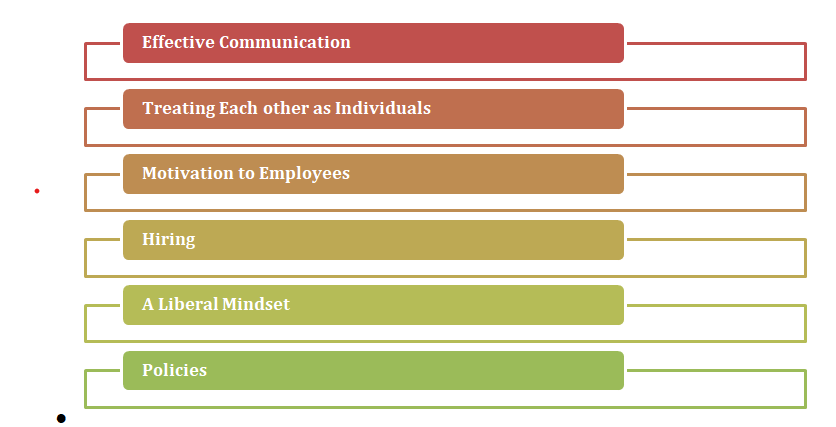
Figure 8: Diversity Management Strategies
(Source: created by the learner)
- Motivation to Employees: Motivate the employee is another factor that helps him to be encouraged to provide service to the organisation.
- Hiring: To obtain a better diversity within the work culture hiring from different background people help to understand different aspects of the business. Proper hiring of skilled and qualified people help to develop the cultural facility.
- A Liberal Mindset: A liberal mindset within the organisational culture helps to mitigate discrimination and cultural issues.
- Policies: Effective code of conduct, Non-discrimination policy, benefits policy are some strategies that help to resolve the discrimination issue and create better cultural diversity in the workplace.According to Jin et al. (2017), a diverse culture has different issues like discrimination on colour and can be managed by monitoring or resolving these issues. The zero-tolerance policy, sensitive training process and implementing diversity law maintenance of the diversity within the organisation can be maintained easily.
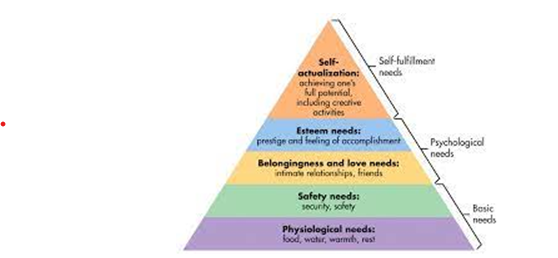
Figure 9: Maslow’s Hierarchy Model
(Source: Poirier and Devraj, 2019)
Maslow’s law provides the concept of employee satisfaction and in this theory, five steps are associated with the Maslow hierarchy. Self-actualization, safety, belongings, esteem and psychological needs are some aspects that every employee wants.
All these can be achieved only if an organised diverse work culture has been practised in the work structure and this induced employee satisfaction (Poirier and Devraj, 2019). http://KOL605HRM International Human Resource Management Assignment Sample
Maslow hierarchy law links with all these pyramid’s steps that provide a clear idea that what employees want and how satisfaction of employees can be maintained. Employee satisfaction gives a positive impact on the organisation performance and helps to conduct a better understanding of diversity.
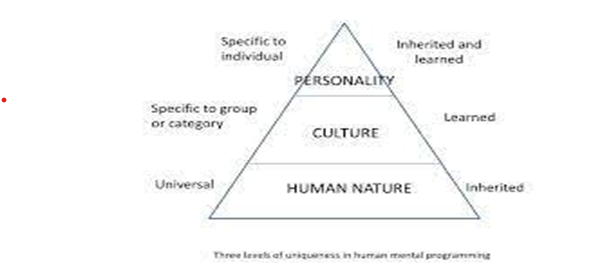
Figure 10: Cross-cultural Model
(Source: Minkov and Kaasa, 2020)
Different cross-cultural models like Hofstede’s model provides a total understanding of cultural factor. Hofstede cultural model provides a detailed analysis of national, gender, regional, social and generation levels through which understanding of cultural practice within the organization can be understood (Minkov and Kaasa, 2020). http://KOL605HRM International Human Resource Management Assignment Sample
This theory and model provides the idea that diversity within the workplace culture creates a differentiation of the cultural aspect. This cultural model enhances the clarity towards the relationship between workplace performance and employee satisfaction.
Conclusion
This reporting structure has included detailed information regarding diversity and it can be managed for better fulfilment of the performance and satisfaction. The overall structure provides the concept that diversity is important to enhance the quality of employee’s training and thoughts processes. The concept of diversity and its impact on organisation performance has been introduced through this study. Through utilising the cultural models and concepts the IHRM strategies and policies have been illustrated.
The comparison between the cultural diversity within the different countries has been discussed by conceptualising all the theories on HRM and culture. Cross-culture is a perception that helps to create a better accommodation of employee satisfaction. Through this report, the concept of employee satisfaction has been discussed along with the concept that how cultural diversity influences employee satisfaction.
The cross-cultural theory, Maslow’s model, Hofstede’s model have been discussed by evaluating their concept. By evaluating all the concepts it can be stated that diversity within the work culture has a direct connection with employee satisfaction and successful work culture can enhance performance.
Reference list
Abraheem, A. and Adams, C., 2017. Understanding eService strategies in countries with different level of instability: comparative study. SOCRATES, 5(2), pp.74-105.
Banihashemi, S., Hosseini, M.R., Golizadeh, H. and Sankaran, S., 2017. Critical success factors (CSFs) for integration of sustainability into construction project management practices in developing countries. International journal of project management, 35(6), pp.1103
Brewster, C. and Söderström, M., 2017. Human resources and line management 1. In Policy and practice in European human resource management (pp. 51-67). Routledge.
Brewster, C., 2017. The integration of human resource management and corporate strategy. Policy and practice in European human resource management, pp.22-35.
Carvalho, A.M., Sampaio, P., Rebentisch, E., Carvalho, J.Á. and Saraiva, P., 2019. Operational excellence, organisational culture and agility: the missing link?. Total Quality Management & Business Excellence, 30(13-14), pp.1495-1514.
Cho, S., Kim, A. and Mor Barak, M.E., 2017. Does diversity matter? Exploring workforce diversity, diversity management, and organizational performance in social enterprises. Asian Social Work and Policy Review, 11(3), pp.193-204.
Cui, V., Vertinsky, I., Robinson, S. and Branzei, O., 2018. Trust in the workplace: The role of social interaction diversity in the community and in the workplace. Business & Society, 57(2), pp.378-412.
Ererdi, C., Nurgabdeshov, A., Kozhakhmet, S., Rofcanin, Y. and Demirbag, M., 2020. International HRM in the context of uncertainty and crisis: a systematic review of literature (2000–2018). The International Journal of Human Resource Management, pp.1-39.
Erthal, A. and Marques, L., 2018. National culture and organisational culture in lean organisations: a systematic review. Production Planning & Control, 29(8), pp.668-687.
Farndale, E., Raghuram, S., Gully, S., Liu, X., Phillips, J.M. and Vidović, M., 2017. A vision of international HRM research. The International Journal of Human Resource Management, 28(12), pp.1625-1639.
Gelfand, M.J., Aycan, Z., Erez, M. and Leung, K., 2017. Cross-cultural industrial organizational psychology and organizational behavior: A hundred-year journey. Journal of Applied Psychology, 102(3), p.514.
Gomez, L.E. and Bernet, P., 2019. Diversity improves performance and outcomes. Journal of the National Medical Association, 111(4), pp.383-392.
Howe-Walsh, L. and Kirk, S., 2020. Self-Initiated Expatriates and the Role of International Human Resource Management. In Self-Initiated Expatriates in Context (pp. 195-213). Routledge.
Jin, M., Lee, J. and Lee, M., 2017. Does leadership matter in diversity management? Assessing the relative impact of diversity policy and inclusive leadership in the public sector. Leadership & Organization Development Journal.
Kangas, M., Muotka, J., Huhtala, M., Mäkikangas, A. and Feldt, T., 2017. Is the ethical culture of the organization associated with sickness absence? A multilevel analysis in a public sector organization. Journal of Business Ethics, 140(1), pp.131-145.
Kawiana, I.G.P., Dewi, L.K.C., Martini, L.K.B. and Suardana, I.B.R., 2018. The influence of organizational culture, employee satisfaction, personality, and organizational commitment towards employee performance. International research journal of management, IT and social sciences, 5(3), pp.35-45.
Manoharan, A. and Singal, M., 2017. A systematic literature review of research on diversity and diversity management in the hospitality literature. International Journal of Hospitality Management, 66, pp.77-91.
Minkov, M. and Kaasa, A., 2020. A test of Hofstede’s model of culture following his own approach. Cross Cultural & Strategic Management.
Nazarian, A., Atkinson, P. and Foroudi, P., 2017. Influence of national culture and balanced organizational culture on the hotel industry’s performance. International Journal of Hospitality Management, 63, pp.22-32.
Poirier, T.I. and Devraj, R., 2019. Pharmacy in an improved health care delivery model using Maslow’s hierarchy of needs. American journal of pharmaceutical education, 83(8).
Pucik, V., Evans, P. and Björkman, I., 2017. The global challenge: International human resource management.
Ramani, S., Könings, K.D., Mann, K.V., Pisarski, E.E. and van der Vleuten, C.P., 2018. About politeness, face, and feedback: exploring resident and faculty perceptions of how institutional feedback culture influences feedback practices. Academic Medicine, 93(9), pp.1348-1358.
Roscoe, S., Subramanian, N., Jabbour, C.J. and Chong, T., 2019. Green human resource management and the enablers of green organisational culture: Enhancing a firm’s environmental performance for sustainable development. Business Strategy and the Environment, 28(5), pp.737-749.
Torbiörn, I., 2017. Staffing policies and practices in European MNCs: strategic sophistication, culture-bound policies or ad hoc. International Human Resource Management: A Critical Text, 47.
Know more about UniqueSubmission’s other writing services:

